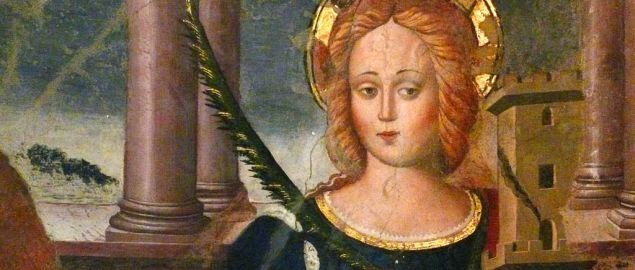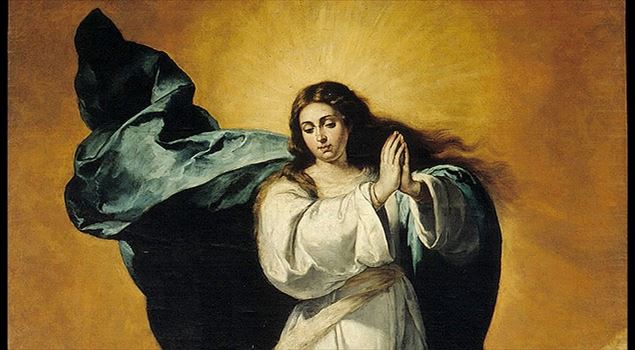
It is celebrated on December 4th because on this date in 306 she died as a martyr, tortured according to legend with fire. And for this reason it is invoked against sudden death by fire, against lightning and explosions. Explosives and weapons are kept in warehouses which are called, not surprisingly, “stores”. She is the patroness of bomb squad, fire brigade (whose prayer recites Our life is fire, our faith is God for Saint Barbara Martyr!), miners, sailors, artillerymen, architects, environmental engineers, bricklayers, bell ringers, umbrella makers. To celebrate it, there are those who shoot blanks into the air and those who visit the fire brigade barracks.
The “Santa Barbara” barracks of the Italian army, located in Anzio and currently home to the RISTA – EW Brigade, is dedicated to the Saint. The barracks of the anti-aircraft artillery school of Sabaudia (LT), the headquarters of the Horse Artillery (Voloire) located in Milan. As protectress of the Sailors of the Navy, an image of the Saint is always placed in the ammunition depots of the Naval Units and barracks.
On 4 December on board the Naval Units of the Navy, according to tradition, a bundle of red roses is given to the 1st Director of Shooting on board. She is among the most venerated saints in the world, especially in South America, Asia, Europe and the United States.
The biography
Originally from Turkey, where she was born in 273 AD in what is now İzmit, at that time Nicomedia, she came into conflict with her father Dioscorus, a pagan, due to his conversion to Christianity. Between 286-287 Barbara moved to the rustic villa of Scandriglia, today in the province of Rieti, following her father, a collaborator of the emperor Maximian Erculeus.
Barbara’s conversion to the Christian faith provoked the wrath of Dioscorus. The girl was thus forced to take refuge in a forest after having destroyed the gods in her father’s villa. Once found, it was handed over to the prefect Marciano. During the trial which began on 2 December 290 Barbara defended her beliefs and urged Dioscorus, the prefect and those present to repudiate the pagan religion and embrace the Christian faith. This cost her painful torture. Finally, on December 4, she was beheaded with the sword by Dioscorus himself, who was however struck by lightning.
The Passio versions
There are many Greek redactions and Latin translations of Barbara’s passio; However, these are legendary narratives, whose historical value is very limited, also because there are quite a few divergences.
In some passions, in fact, his martyrdom is placed under the empire of Maximinus the Thracian (235 – 38) or Maximian (286 – 305), in others, however, under that of Maximinus Daia (308 –13). Nor does there exist greater agreement on the place of origin, since we speak of Antioch, of Nicomedia and, finally, of a place called “Heliopolis”, distant 12 miles from Euchaita, a city of Paphlagonia. In the Latin translations, the question becomes more complicated, because for some of them Barbara would have lived in Tuscany, and, in fact, in the Martyrology of Adonis we read: “In Tuscia natal sanctae Barbarae virginis et martyris sub Maximiano emperor”. We are therefore faced with the case of a martyr whose cult until ancient times was widespread, both in the East and in the West; however, as far as biographical information is concerned, very few elements are available: the name, the oriental origin, most likely Egypt, and the martyrdom.
The legend, then, enriched the life of the martyr with fantastic, sometimes even unreal, details: these are details that had an influence on both the cult and the iconography.
Locked in the tower by her father
Barbara’s father, Dioscuro, had a tower built to lock up the beautiful daughter requested in marriage by many suitors.
She, however, did not intend to get married, but to consecrate herself to God. Before entering the tower, not yet being baptized and wanting to receive the sacrament of regeneration, she went to a pool of water near the tower and immersed herself three times. times saying: “Barbara is baptized in the name of the Father, of the Son and of the Holy Spirit”.
By order of her father, the tower should have had two windows, but Barbara wanted three in honor of the Holy Trinity. The pagan father, having learned of his daughter’s Christian profession, decided to kill her, but she, miraculously passing between the walls of the tower, managed to escape. Once again captured, her father took her before the magistrate, to be tortured and cruelly killed. The prefect Marciano tried to convince Barbara to withdraw from her intention; then, seeing that the attempts were useless, he ordered her to be tormented by wrapping her whole body in rough and rough cloths, so much so that she bled everywhere. During the night, the story continues following a pattern common to hagiographic legends, Barbara had a vision and was completely healed.
The following day the prefect subjected her to new and more cruel tortures: he had red-hot iron plates placed on her once again torn flesh. A certain Giuliana, present at the torture, having expressed Christian feelings, was associated with martyrdom: the flames, lit at their sides to torment them, went out almost immediately. Barbara, carried naked through the city, miraculously returned dressed and healthy, despite the order of flagellation. Finally, the prefect sentenced her to have her head cut off; it was the father himself who carried out the sentence. Immediately afterwards a fire descended from the sky and completely burned the cruel father, of whom not even the ashes remained.
The relics: from Egypt to Torcello
Emperor Justin, in the century. VI, would have transferred the relics of the martyr from Egypt to Constantinople; a few centuries later the Venetians moved them to their city and from here they were taken to the church of S. Giovanni Evangelista in Torcello (1009).
The cult of the martyr was very widespread in Italy, probably imported during the period of the Byzantine occupation in the century. VI, and then developed during the Crusades. Traces of it can be found in Tuscany, Umbria and Sabina. In Rome, then, according to the testimony of John the Deacon (Life, IV,89), s. Gregory the Great, when he was still a monk, loved going to pray in the oratory of S. Barbara.
The text, however, has value only for the 9th century; however, it is certain that in this century oratories had been built in honor of B., of which the Liber Pontificalis (ed. L. Duchesne, II, pp. 50, 116) in the biographies of Stephen IV (816-17) and Leo IV (847-55). Barbara is particularly invoked against sudden death (an allusion to that of her father, according to legend); later his protection was extended to all people who were exposed in their work to the danger of instant death, such as the bomb disposal experts, the artillerymen, the carpenters, the miners; today she is also venerated as the protector of firefighters. On warships the ammunition depot is called “Santa Barbara”.









